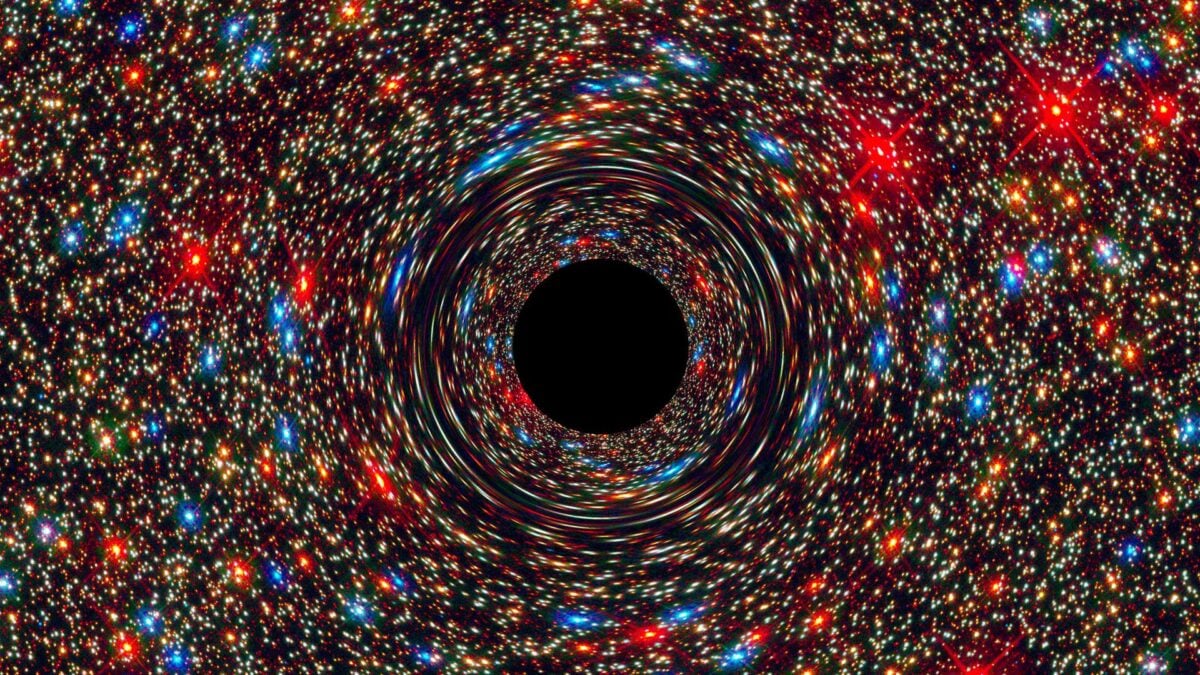Daring New Plan Lays Out Mission to a Black Hole

Fifty-six years after Disney filmmakers imagined what it would be like for a spacecraft crew to journey to a black hole in the 1979 movie The Black Hole, an astrophysicist has released a plan for a real interstellar mission to go where no spacecraft has gone before.
Outlined in a new paper published today in iScience, the proposal is a two-pronged, surprisingly simple approach. First, scientists need to find a black hole that’s relatively nearby. Second, they need to build something called a nanocraft—a tiny probe that runs on a microchip—sturdy enough to withstand the journey.
With the appropriate technological advances, it could be doable within a few decades, Cosimo Bambi, the paper’s author and a theoretical physicist at Fudan University in China, told Gizmodo.
The idea is “very speculative and extremely challenging,” the paper states, although “not completely unrealistic.” In addition to the proposal, Bambi presents a potential trajectory for the spacecraft, as well as an outline of what scientific experiments it could perform and how it might work.
Searching for a nearby black hole isn’t a new concept for astrophysicists by any means. If anything, scientists have been getting better at it every year. And nanocrafts have also previously been touted as a next-generation spacecraft for exploring exoplanets—some initiatives have in the past received backing from major thought leaders in this space, including Stephen Hawking.

Still, even if scientists managed to figure out the details, the mission could take up to 100 years, depending on where the target black hole is located. That’s nothing in the general timescale of breakthroughs in astrophysics, Bambi said. Gravitational waves, for instance, took more than a century to confirm after they were first predicted.
“This is not something we can do tomorrow,” Bambi said, adding that his approach could be proven wrong. But assuming scientists will want to directly probe a black hole someday—a long-standing goal of astrophysics—the discussions around how to do it need to start somewhere, he said.
“The proposed mission is indeed challenging, but not entirely impossible,” said Honghui Liu, an astrophysicist at the University of Tuebingen in Germany who was not involved with the work, in an email to Gizmodo. Liuechoes Bambi’s argument that the proposal may be valuable in the future: “Sometimes we need to think boldly and do the calculations,” Liu said.
If—and this is a supermassive if—scientists are ever able to send a probe to a black hole, it would revolutionize our understanding of the universe. For example, scientists have long suspected that the extreme conditions around a black hole could reveal new information that contradicts general relativity, but current observation techniques make it hard to directly characterize the physical conditions of spacetime near a black hole.
“Currently, such tests are only possible in weak gravity regimes, such as within the solar system,” Liu explained. Having a highly sensitive probe that can send signals back to Earth could offer much-desired “clean” data around a black hole, according to both Liu and Bambi. That is, if it can survive the gravitational pull of these objects, and not get ripped apart or eaten like every other piece of matter that comes too close…









